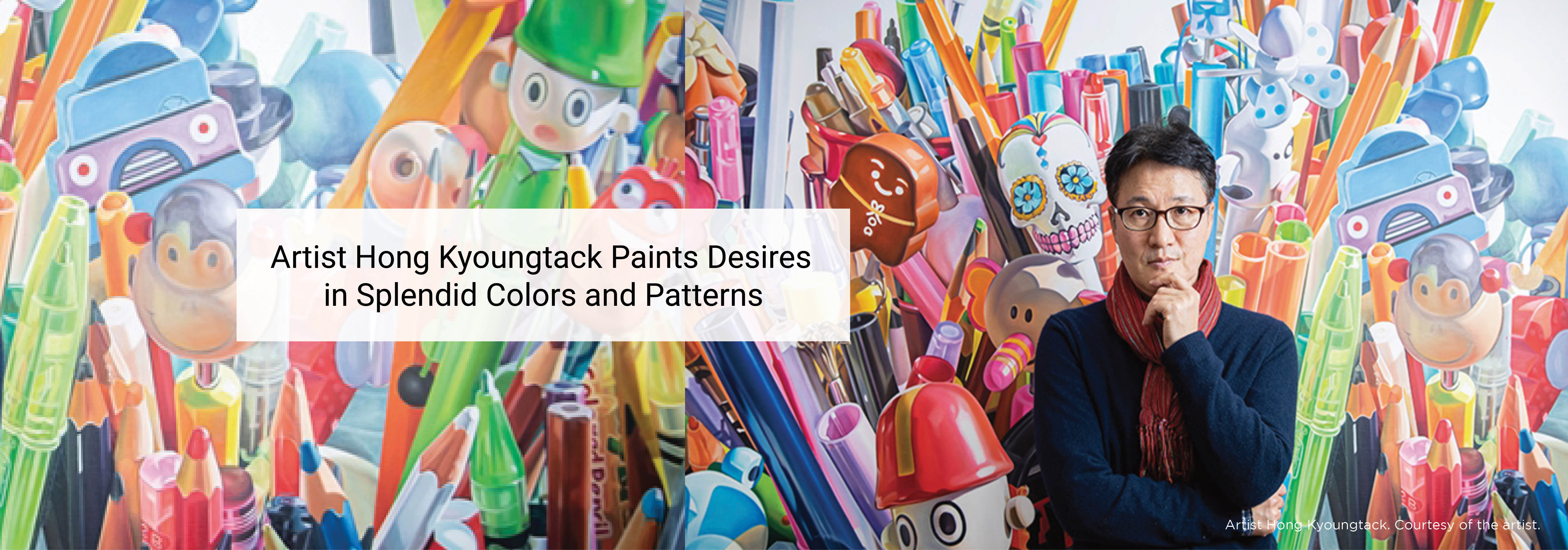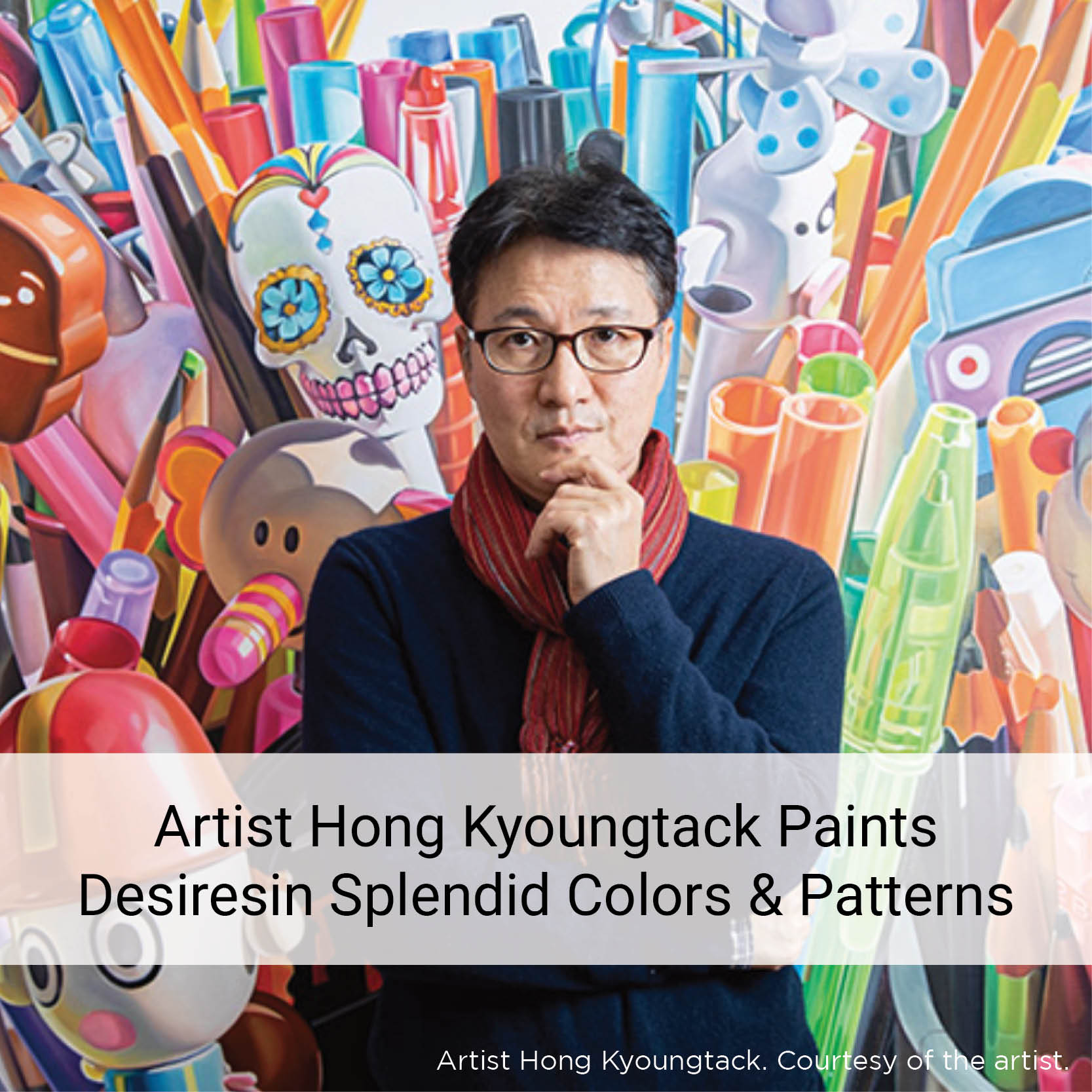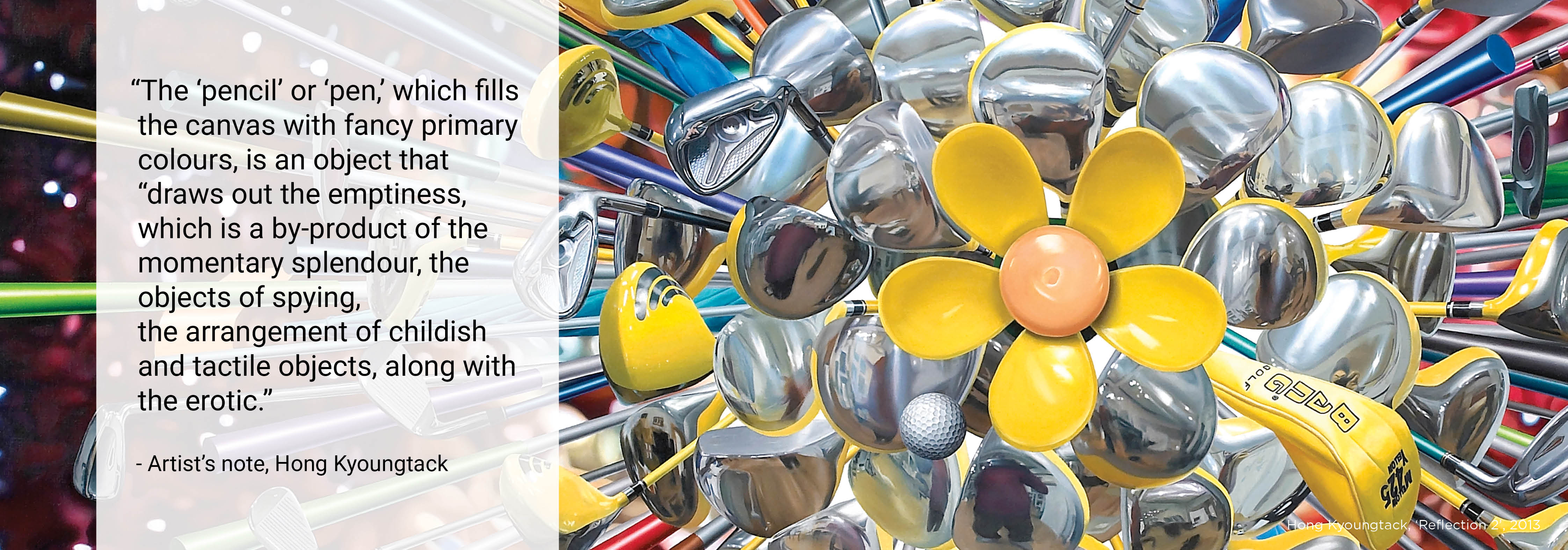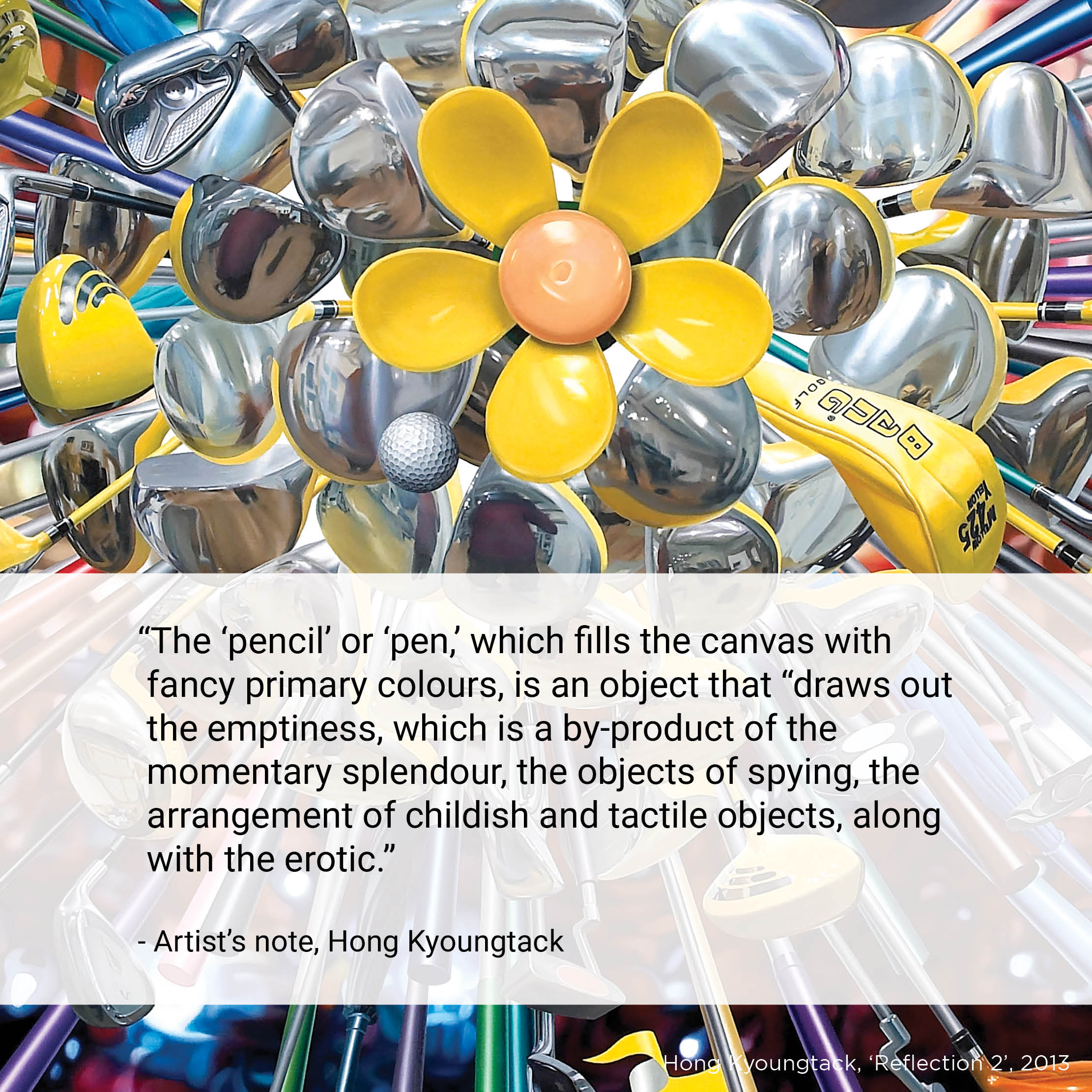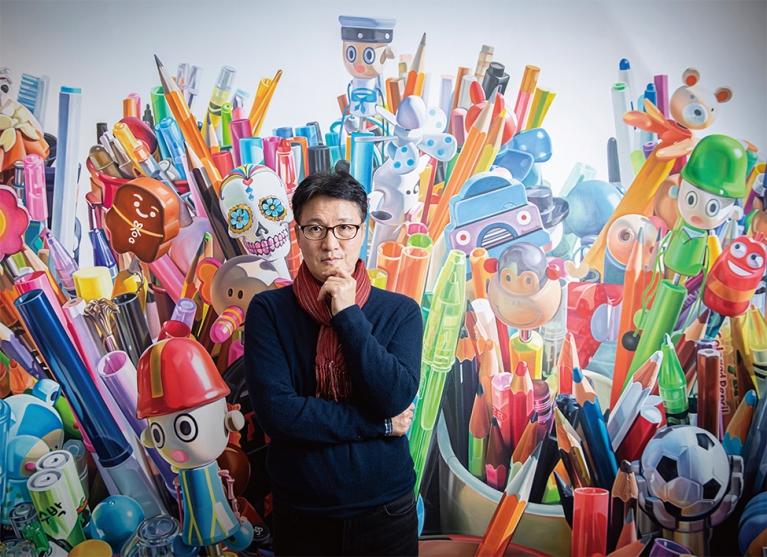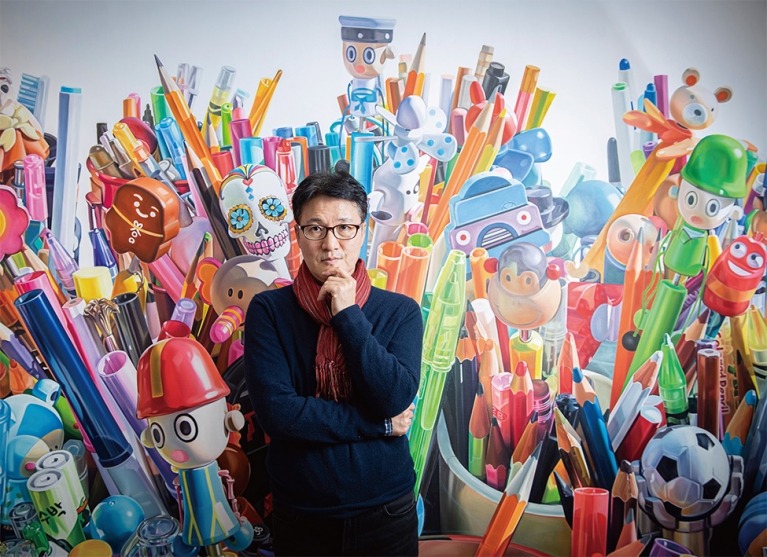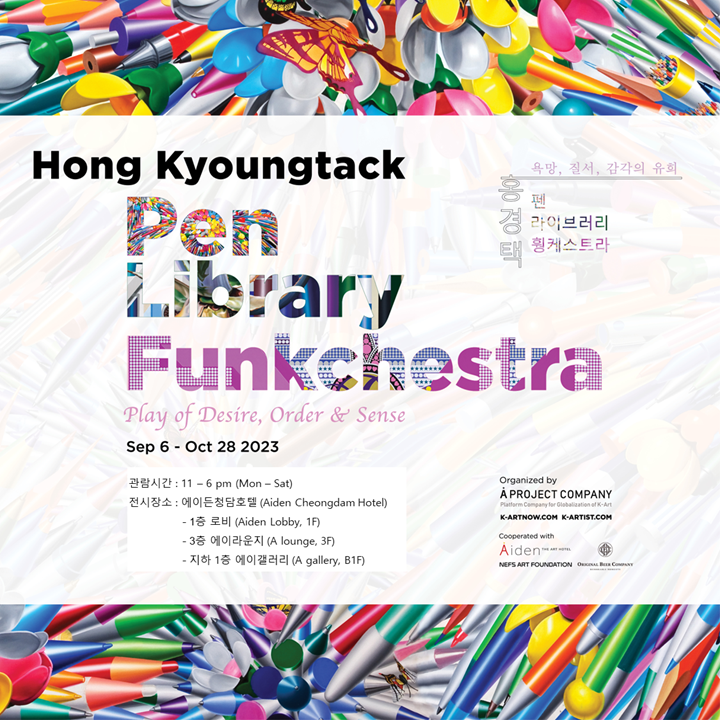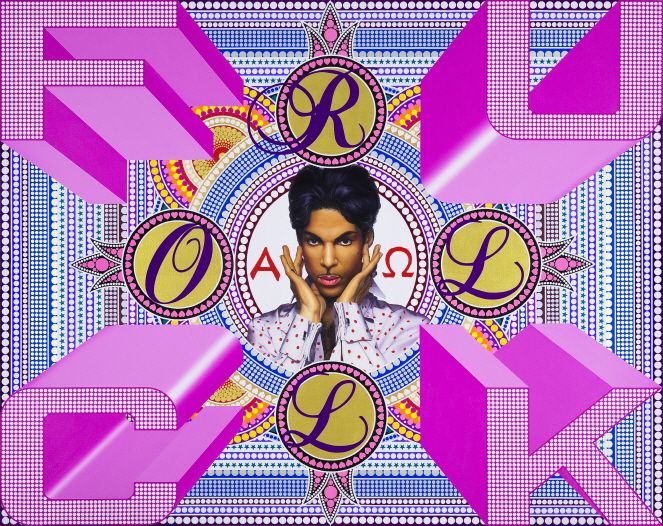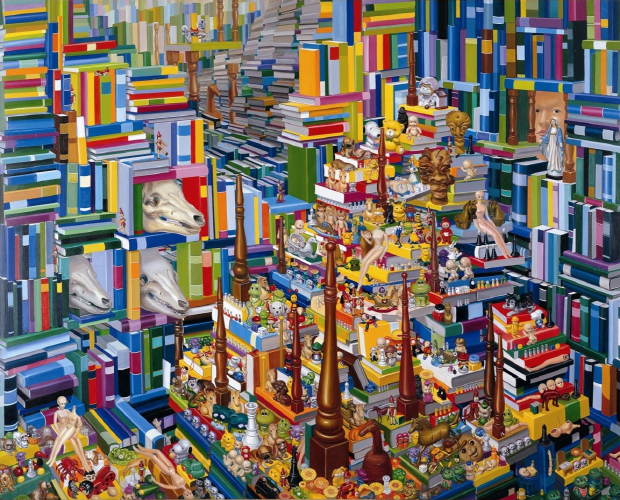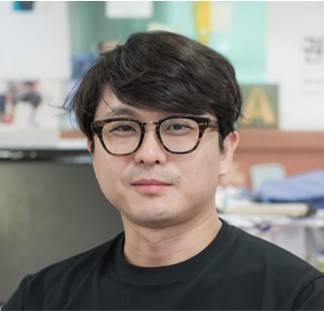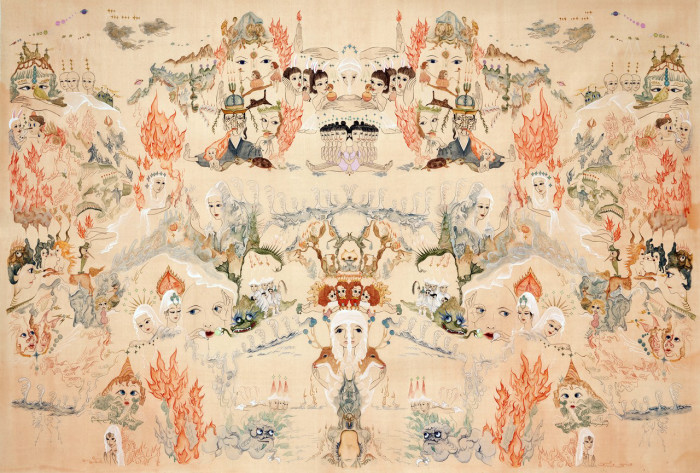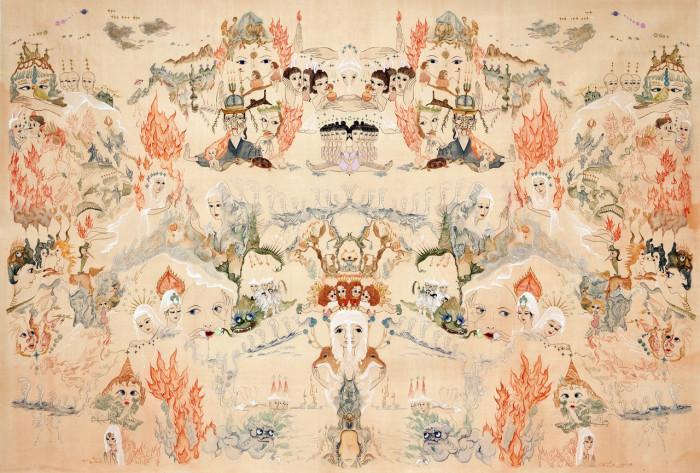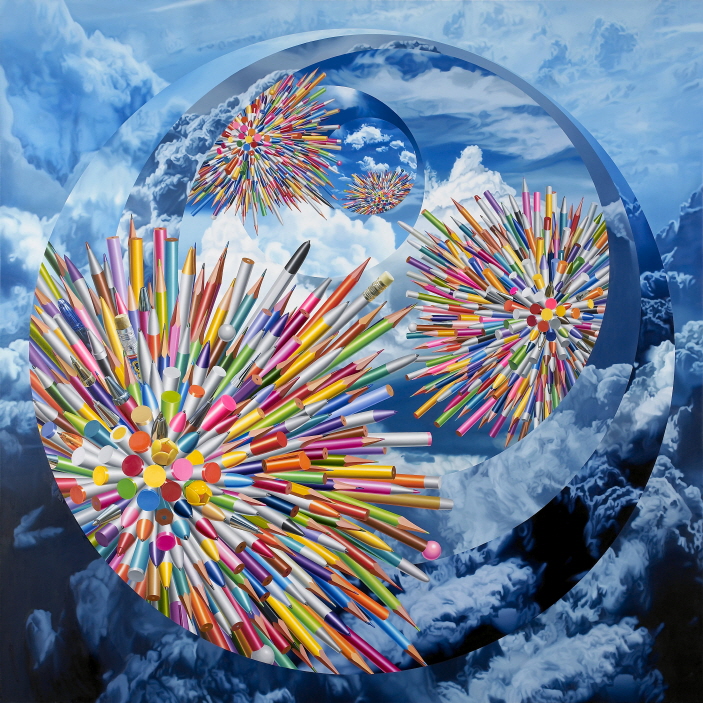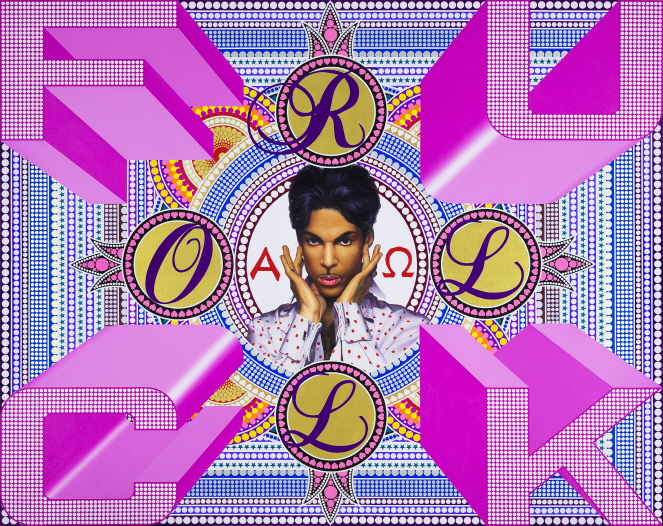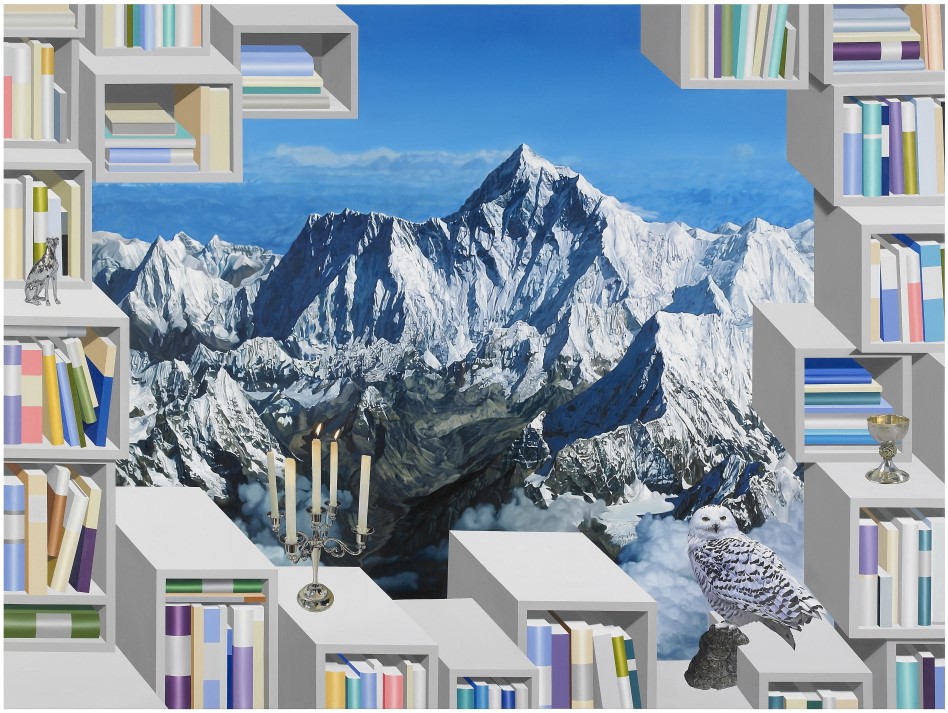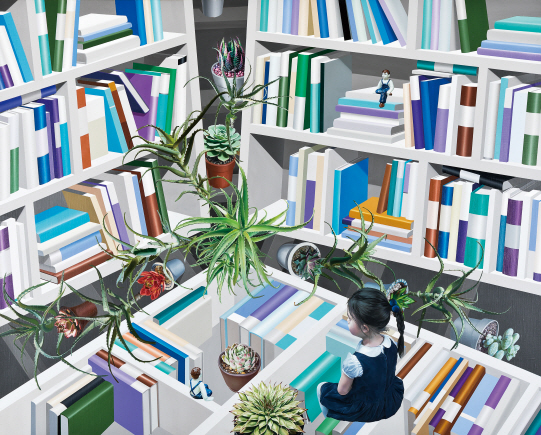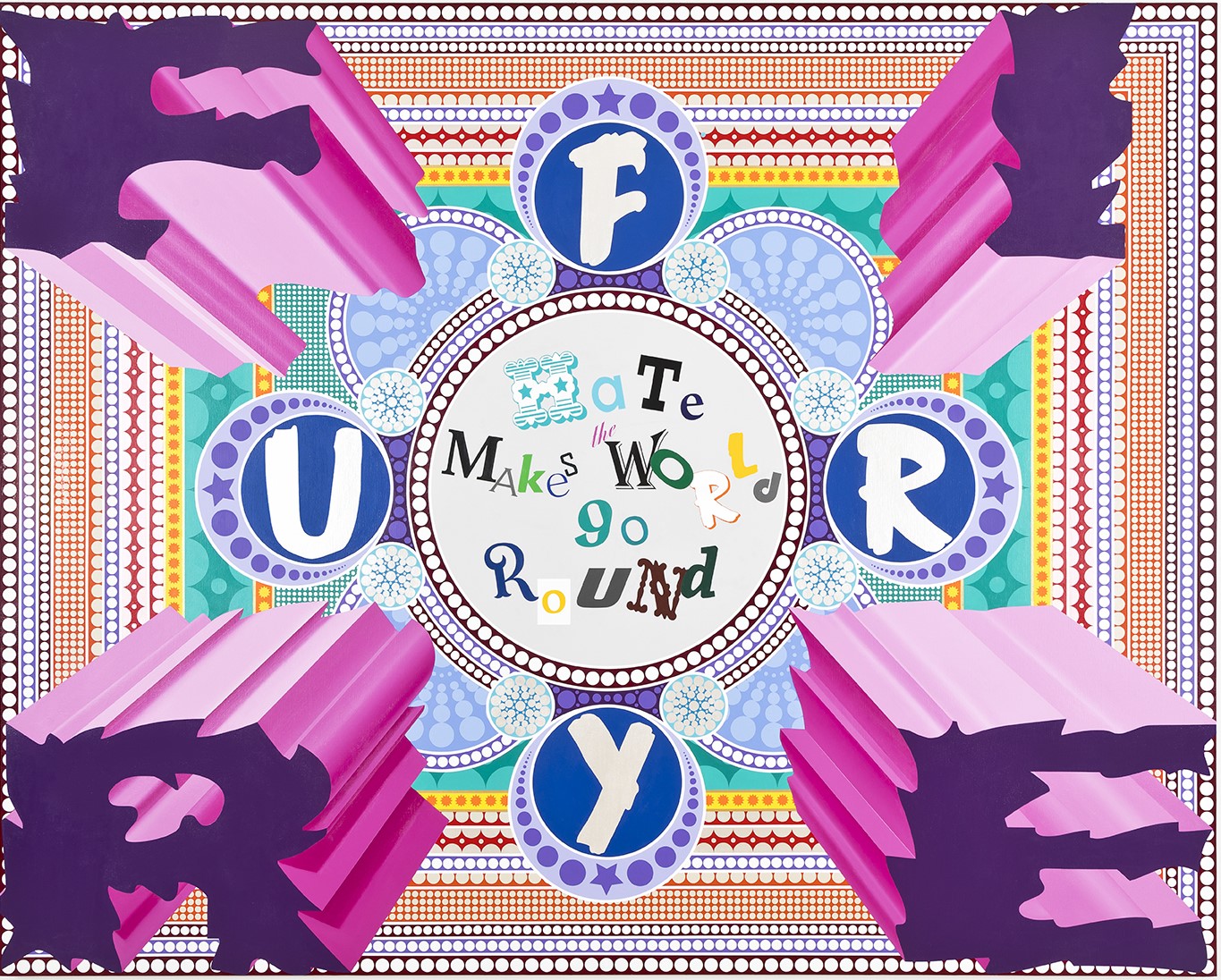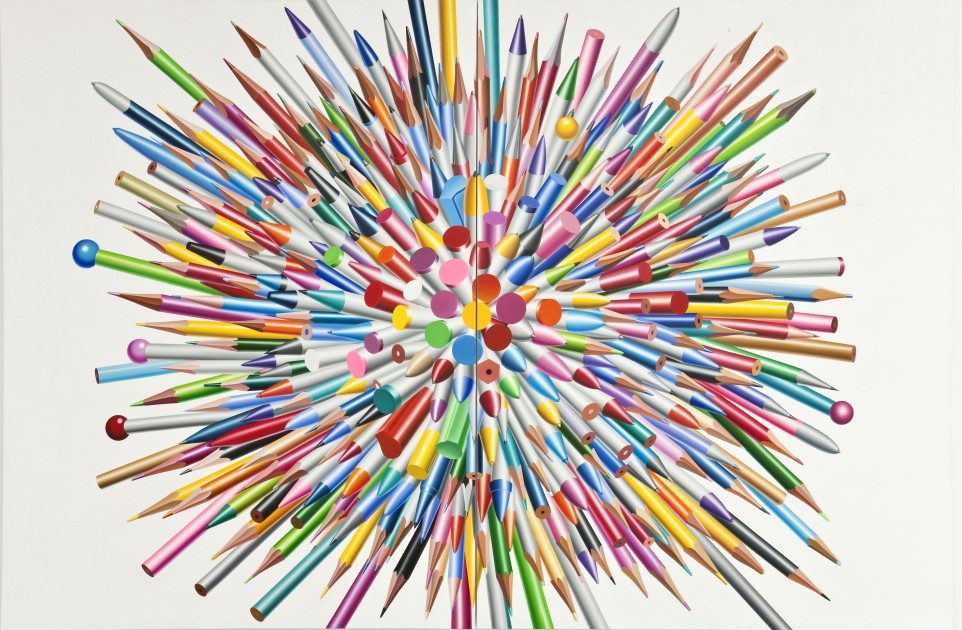1.
In the works of Hong Kyoung-tack, we can easily see items that are available anywhere yet pass by our daily life nonchalantly such as pencils, pens and books. Pens are the most common item, but the most popular subject like pop stars constitutes one of the main subject matters in his painting. The same way American artists like Jasper Johns since the 1950s started to pay attention to everyday life objects that are close to us in the condition even without any weapon to fight against abstract expressionism, his works also transformed meaningless things into a public theme while repackaging legacy of the modern-day society.
In particular, the work "Pencil"’ proposing a new method of facing images and objects by recalling the inanimate matter "pencil" to the integrated screen and recomposing them proved his marketability when his work was auctioned off at high prices of about 800-900 million won in Christie's Hong Kong in two occasions of 2007 and 2013. As far as I know, the most popular images of his painting must be from this "Pencil" or "Pens."
However, as we can see from the work "Pens" exhibited in Indang Museum, his "Pencils" and "Pens" Series leave nothing to be desired to bring intense sensation even with the works themselves (the same happens with "Speaker box 4" hung in the exhibition hall). Many still remember these works by auction and price. In fact, "Pencils" and "Pens" filling the canvas with multifarious primary colors that seem to bounce and fly in all directions bring visual vivaciousness and emotional cheerfulness. Despite being the painted image, they seem to say that the attributes confirming commonplace daily life to which they originally belong never change and they abound with rhythms and musical elements.
However, the "Pencil"-involving works are ironical in the sense that they are more than mere bright and cheerful resonation. I am not sure how others might think, but from his painting, I can feel vital power flourishing even under the arbitrary pressure (it is interesting enough that he can give vital power to these plain objects). In particular, from his "Pencils" that are extremely compact, I see a sort of psychological obsession. Through this obsession, we discover that it not only recalls life of contemporary people busy with repetitive "wheel spinning" without being able to move an inch but also makes consume even death on the other side of the splendorous aspect.
Maybe it is because that the feature of "pencils," nothing but a simple and handy tool and the weight of human life going through constant separation are felt like two sides of the same coin. In other words, human life (life of dry urban culture) seems to flow indifferently as it is, but it contains attributes that are exhausting and heavy at the same time. For this reason, as we can see in his work filled with compact "pens" with every kind of caps of characters, his objects look light but insinuate that our life is far from being light. Thus, we can perceive the inseparable relationship between seriousness of his life and manifestation of it.
2.
As this text started with "pencils," many automatically recall his painting of "pencils" on hearing his name Hong Kyoung-tack. However, his art world has a wide range of spectrum. Yes, his art world is diversified ranging from "Still life" series from the 1990s to "Library" series full of everyday life touches of the artist and "Funkchestra" that is the feast of semiotics made of music. In front of "Cocoon," the installation work jointly created with his older brother running a glove factory, we soon realize that the scope of art painting he captures is surprisingly broad enough. Moreover, from the painting "The End" of 2008 in which a couple of skulls face each other between the red curtain, it is even possible to sense somewhat religious and philosophical mood.
In particular, the most eye-catching Series is this "Funkchestra," the masterpiece of harmony of colors and shapes. This work is included in the exhibition of Indang Museum. Based on inspiration from music, this work exquisitely combines aesthetic values with banality of popular culture. "Funkchestra" exhibited in Arko Art Center in 2005 embraces figures representing different art genres such as Marilyn Monroe, John Lenon, Van Gogh and Prince as well as text expressing critical mind of the time like "AIDS" combined with lyrics of songs. On the other hand, the exhibition of Indang Museum will invite us to not only nine works of "Funkchestra" including one set of six works but also other works that had not been displayed so far. This makes the difference.
Then what could the essence of "Funkchestra" be? In "Funkchestra," a corrupt world exists together with a sacred world. It is a stage of "contemporaneity" composed of instantaneity and eternity, vulgarity and exclusivity, production and consumption of which even death is lightly volatilized. Funkchestra is characterized by abundant levels of architectural, artistic, emotional, intellectual, non-noble, noble, instantaneous, sexy, sensational and commercial ingredients forming an ensemble.
What implicitly crosses is contemporaneity. This concept "contemporaneity" is never observed in any texts referring to "Funkchestra" but it is a key word designating "Funkchestra" of Hong Kyoung-tack. In a word, this can be summarized as continuation of instant and continuous instant. In the middle of complex, confusing and constantly crashing and conflictive life, we can assume that the artist regularized the chaotic world seeking consolation and rest through intense colors and simple patterns. "Funkchestra" is given eternity to the architectural order by attracting contemporaneity that is perplexed what to do for being entangled.
"Funkchestra" the combined melody between Funk that is light, weighty and somewhat vehement and decent orchestra is created through visual images. It resembles meticulousness of "pencils" by nature.
Except the fact that it is relatively stable and static and partly belongs to text art, it is true in the sense that there is this psychological touch that constantly seeks breakthrough and the traces of time filtered from the lyrics of rapidly changing popular music transform into oral statement by way of rhythmic hands while creating humongous combination. In other words, this is order in the middle of chaos and variation of concord and dissolution.
Another common denominator between "Pencils" series and "Funkchestra" can be found from the fact that both search for senses of visual information and show deep concerns about existence.
Here, existence primarily indicates the question of "me." Existence, which is almost close to obsession, is located in a specific situation limiting a certain choice. For this reason, it is quite reasonable to say that this represents the artist's values and philosophy regarding "Daesin (being there, presence)."
3.
Hong Kyoung-tack could form his philosophy as presence (Daesin) facing others because he did not lose trust and belief in himself even long years of obscurity as an artist. Therefore, the figure of "pencils" with colorful explosion and eruption and the constructivist screen of "Funkchestra" keeping relative tranquility are closely linked with the "concrete situation restricting a certain choice" that he had to endure in the past.
Another point regarding existence lies in its connection with "desire." This means that no matter what "I" and we have "created" to display my/our essence or performance, it would not play only positive roles but it can even turn into an obstacle leading to the loss of true self. If this is applied to art, art can help me exist as "me" but, at the same time, it can be contradiction of "desire" that keeps me from existing as complete "me."
It has contradiction mixed with double-sidedness as observed in "Monologue" describing another method of communication through "pencils" moving forward as if they were erupting across the canvas as well as chaotic order, public consent and waves of "everydayness." This feature is clearly seen in candlesticks, skulls, dolls, holy chalices, animals, plants and portraits of celebrities that frequently appear in his painting. They have heterogeneous and ill-matched aspects. Despite this, the common denominator as reasoning for significance between language and image is still valid.
Come to think of it, the same way it happens with "pencils," "Funkchestra" showing the floating shapes in the space and colors as composition itself, Series of "Still life" and "Library" and "Monologue," they all work as a symbol representing religious and vulgar relationship while speaking about the time and crossing over life and death. This contradiction enhances its degree when contradiction of thinking is seated under the two-dimensional perspective.
In some ways, this is like two sides of the same coin. (explaining this from the concept of life and death, both collide into each other, life denies death and death pushes life, Both elements are characterized by mutual exclusion, contradiction yet compatibility. This big noise of collision for artists is unbearable pain though. However, if Hong Kyoung-tack had to be placed in this situation, he would ask this way. Is there any path where life meets death?).
Nevertheless, his "Pencils" series subtly cast us questions like "what is given to us?" and "what do we leave and gain?" It will be a correct interpretation when we say that the end means invisible desire and emptiness hidden behind the splendor like the relationship between image and non-image of "pencils." (Adding some idea about this image, the difference in belief and function of which it is constantly reproduced through diverse experimental media such as television and video beyond the restriction of space brought changes as tremendous as the gap of time. In other words, the past images stayed in love of bones, while today's images pace the territory of affection and deficiency of art and money. But the general features drastically changed. While the past images own some incantatory values wishing for something or implication or religiosity for eternal life, today's images seem to be quite commercial and self-regenerative with highly special but, in fact, not really special independent character. The vertex meets desire and emptiness in the end though).
The questions and answers regarding the process of settling desire, how to handle the feeling of helplessness when reaching the end, the true human figure, and where to find the fundamental ego can be considered essence inherent in "pencils" and "Funkchestra." By the way, this judgment is purely mine, but I can easily imagine that Hong Kyoung-tack must have never stopped asking these questions while painting "pencils" and "Funkchestra."
4.
Hong Kyoung-tack is highly recognized by art critics and organizers, not to mention, his success in the market. Like artists known for detailed hyperrealist figures such as Kang Hyoung-gu, Oh Chi-gyun and Lee Woo-hwan, he belongs to an artist group that achieved success not only from art critic world but also from the market. As mentioned before, his work "Pencil I" was auctioned off at 780 million won in Christie's Hong Kong Auction in 2007 and this was the highest price in the auction of overseas art works (even after that, the price of his painting always accompanied him as a name tag representing his identity).
When his work was auctioned off in the world-class auction, he became a star overnight in the art world. It was quite an interesting event to such an extent that anybody could easily recognize his name "Hong Kyoung-tack." However, he keeps concerning about his art works trying to find a way as any other artists. He makes steady efforts to bring changes and shows great interests in quality of work as any other artists do. The traces of these changes include "Monologue" series available in this exhibition (Exhibition Room 2-3) and "War Requiem" and "Insect Collecting" reminding us of some opera songs of Benjamin Britten, the British composer. All these works prove the artist's strong will of not wanting to settle for the reality.
In particular, "Monologue" suggesting sign language attracts our attention in that it is painted in achromatic colors unlike his previous works. According to him, "Monologue" expresses a person standing at the boundary. It is close to hyperrealist work (oil painting on linen). To understand this work in a wiser way, I will quote the artist's own statement. Regarding why he used hands as a subject matter for painting, he explains, "Hands are the most important body tool for painters and sculptors and they are simply rich in expressive power. I started to make formative beauty and expression of hands as an art work because of the common point between two dreams."
He adds, "the same way the Monkey King (Sun Wukong) fails to escape from Buddha's hand and the capitalist economic principle is compared with the invisible hand, I often imagine that the absolute and colossal existence must appear only with some part without showing the entire aspect. The being I express in the form of hands is the god encompassing divinity, devil character and human character."
After hearing his comment, you will soon realize that the context of "Pencils" painting is not really different from that of "Funkchestra" in terms of existence, ambivalence and simultaneity. In addition, you will find that the artist absorbs characteristics and trends of the time and shows in the form of pure art and you will discover that, on the other side, there is the artist's deep concerns and philosophy. In particular, you will also understand that the history of his painting is not limited to "Pencils" or "Funkchestra" but he has been paving out the path of numerous trials of changes for a long time. This vision is not incorrect when we observe his "Abstraction" series belonging to the timeline of the end of the 1980s and the beginning of the 1990s.
Long time ago, with respect to changes, Hong Kyoung-tack once spoke about his concerns about the work before the exhibition at the National Museum of Modern and Contemporary Art (I am not sure if he still remembers this conversation). This precisely shows a cross section of himself as an inborn artist full of humanism. Considering all these, it is not fair that we explain his identity only from the perspective of relationship between art of items of high price and market. In fact, the question of sale price of his works at the auction is not what matters. As other world-famous artists have done, he also wants to be evaluated through his works. His wish is turning into reality slowly yet meaningfully.
5.
Hong Kyoung-tack knows how to effectively mingle popular culture with art. Maybe it is because of the intense image of popular culture, some regards him as a "pop artist" belonging to the line of Pop Art, but I find it difficult to agree entirely. It is because Pop art, in principle, refers to all works with pop-like trends observed in works of contemporary artists from the mid and late 21st century based on British and American Pop art. Pop art was strongly characterized by "breaking boundary" between pure art form and popular culture and reacted to superficial phenomena of the 1950s-1960s in the sensuous manner through the contemporary icons. On the other hand, the works of Hong Kyoung-tack pays attention to mechanism of repression working on the other side of our society and responds to contemporaneity. This is different.
Moreover, while Pop art was not critical of reality and was highly volatile (in particular, American Pop art), the works of Hong Kyoung-tack are considerably calm (I am not sure if the artist admits this though) and somewhat cynical about reality in which members create an entangled relationship. Besides, there is a clear gap between his world and Pop art in the sense that his works respond in the analytical. skeptical and empty manner.
In addition, his works basically have complex aspects combining pure art form with emotion of popular culture and are imbued with aesthetics of life and death, sexual images and sorrowful emotion accepted as a person living in the community. At the same time, Hong Kyoung-tack establishes the particularity created by dense combination between high culture and subculture as one value system and divides ruling class and non-ruling class defined economically to focuses on giving important meaning to his questions and answers regarding diversity of reconstituted society from his perspectives and the sense of "true being."
Despite this, the fact that his works are easily associated with American style Pop art can be explained by the similarity of form. It is because Pop art creates a relationship with some part of the attributes as the famous line of Richard Hamilton goes, "Popular, transient, expendable, low-cost, mass-produced, young, witty, sexy, gimmicky, glamorous." In effect, the works of Hong Kyoung-tack share some common points with Pop art in form and glamor.
Nonetheless, as is the case of "Monologue," what we must not miss from his works is depth. It is about narrative of existence that can never be realized if the attribute of lightness in his works based on "pencils" and the like is interpreted only as a perspective. For instance, though the lines in his "Funkchestra" are different from the dish containing "lines" in "Abstraction" series, his old work, there are real lines and deep "lines" called "suggestive lines." However, we can verify the truth only when the door of his works is unlatched.



